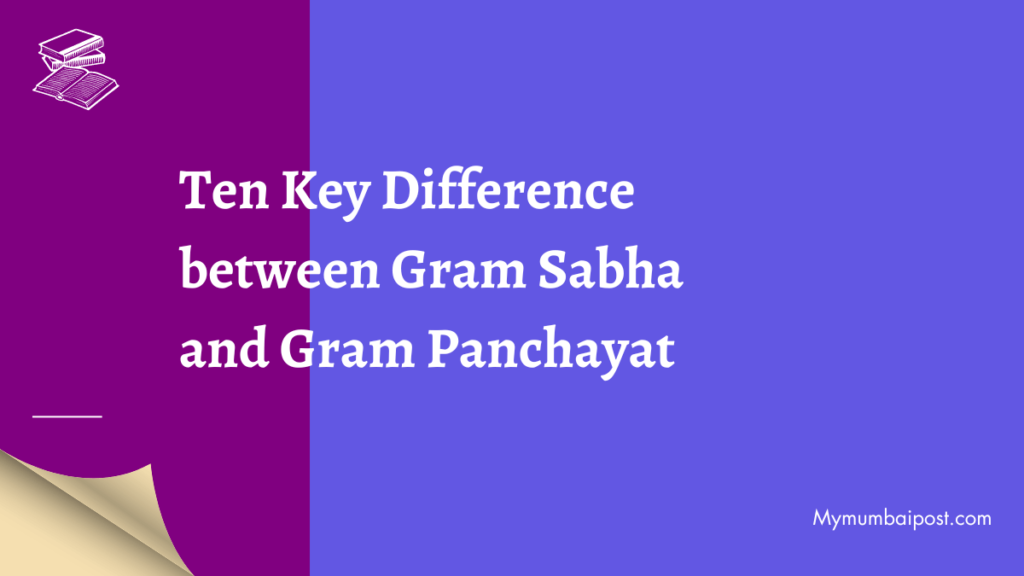
Discover Ten Key Difference between Gram Sabha and Gram Panchayat
Gram Sabha and Gram Panchayat are two important institutions of local self-government in India. While both are closely related to each other, there are significant differences between them. Let’s explore the Ten Key Difference between Gram Sabha and Gram Panchayat.
Difference between Gram Sabha and Gram Panchayat
Gram Sabha and Gram Panchayat are two key institutions of the Panchayati Raj system in India. While both are involved in the development and governance of rural areas, there are some fundamental differences between the two that are worth highlighting. Here are 10 key differences between Gram Sabha and Gram Panchayat.
Purpose: The Gram Sabha is a general assembly of all eligible voters in a village, while the Gram Panchayat is the elected body that is responsible for the administration of the village.
Composition: The Gram Sabha is a mass gathering of all villagers, while the Gram Panchayat is a small elected body consisting of a sarpanch (village head) and a few panchayat members.
Membership: All adult members of the village are members of the Gram Sabha, while the members of the Gram Panchayat are elected by the villagers.
Meetings: Gram Sabha meetings are held at least twice a year, while the Gram Panchayat meets more frequently.
Decision-making: The Gram Sabha is the highest decision-making body in the village, while the Gram Panchayat is responsible for implementing the decisions taken by the Gram Sabha.
Powers: The Gram Sabha has the power to approve or reject any proposal related to the development of the village, while the Gram Panchayat has the power to implement approved projects and plans.
Funding: The Gram Sabha does not have its own budget, while the Gram Panchayat is responsible for managing and utilizing the funds allocated to the village.
Also Read: Discover 10 Key Difference between Employee and Employer
Authority: The Gram Sabha has no executive authority, while the Gram Panchayat is authorized to take executive decisions related to the development of the village.
Accountability: The Gram Sabha is accountable to the villagers, while the Gram Panchayat is accountable to both the villagers and the higher authorities.
Role in governance: The Gram Sabha plays an important role in ensuring transparency and accountability in the governance of the village, while the Gram Panchayat is responsible for the day-to-day administration of the village.
While both the Gram Sabha and Gram Panchayat are important institutions in the Panchayati Raj system, they have different roles and responsibilities. The Gram Sabha is a general assembly of all villagers that takes important decisions related to the development of the village, while the Gram Panchayat is the elected body that is responsible for the implementation of those decisions.
Explore more by watching this video: